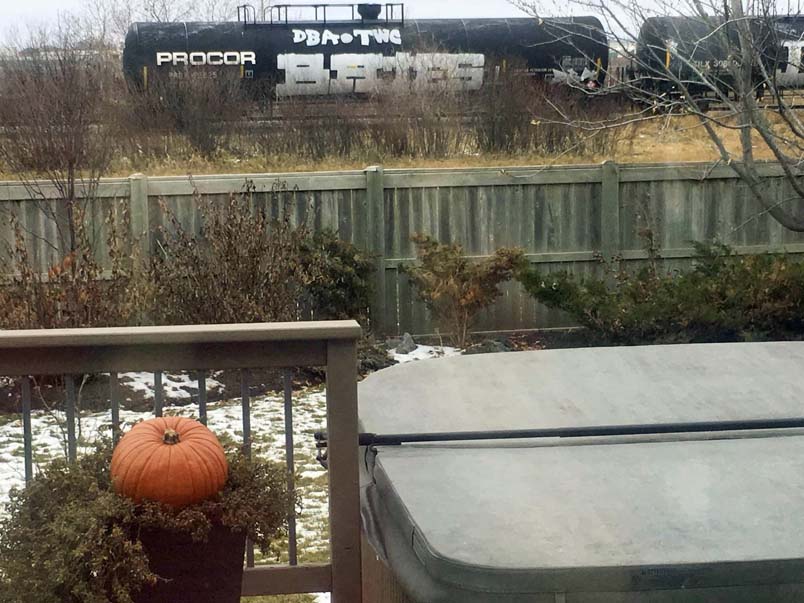
Winnipeg Manitoba - A Whyte Ridge resident is upset after learning that tanker cars holding explosive fuels are allowed to sit near homes
for days at a time, arguing federal rules don't account for the up tick in dangerous goods shipments.
"It's really crazy they don't even have regulations for this stuff," said Todd Jackson, whose backyard looks out to a line of tank cars south of
McGillivray Boulevard.
The cars bear a placard with the code 1075, indicating liquefied petroleum gas, which Transport Canada classifies as dangerous goods.
The track is part of Canadian Pacific's La Riviere Subdivision, which is used primarily to transport grain from elevators between Morden and
Winnipeg.
Jackson has lived in the area for two decades, and has noticed grain cars have been replaced by tankers over the course of roughly five years.
They often sit for days behind his house before they're moved, only to be replaced with more tankers before long.
"The cars aren't very long, and they don't go very fast, which is great. You hardly notice them," he said.
"But they're just an eyesore to look at, and of course the danger is there."
He said he's seen children crawling on top of the cars once or twice near Henry G. Izatt Middle School on Scurfield Boulevard.
The area has a fence and signs warning people to stay away from the tracks.
Jackson reached out to Transport Canada (TC) which had one of its Winnipeg inspectors determine whether the cars can legally be there.
The regulator told him the cars are servicing the Plains Midstream natural-gas pipeline terminal just south of the neighbourhood, and that it appeared the
trains weren't violating any regulations or laws.
The inspector told him that the cars fall under dangerous-goods regulations whether or not there is petroleum in them.
The regulations involve speed limits, reporting, and emergency plans, but not proximity to neighbourhoods.
TC did not dispute Jackson's recounting.
He said he's grown increasingly concerned about safety given reports about rail worker fatigue.
A year ago, the Free Press documented CN workers trying to sleep in cramped bunkers and not following directives on one of Canada's main lines.
The federal Liberals have taken CN and CP to task for lax work-rest rules.
"Whether it's one tanker or 20, an explosion will no doubt wipe you out if you're right behind it. So that's not a good feeling," he said, adding
property values will likely take a hit, and he's reached out to both his city councillor and member of Parliament.
Winnipeg's city council has adopted rail proximity guidelines created by the Canadian Federation of Municipalities and the Railway Association of Canada,
though they apply only to new developments.
The guidelines state that railways' main lines should be at least 30 metres away from homes, and rail yards should have a buffer ten times as
large.
In Whyte Ridge, the track sits 61 metres from the local school and homes, meaning it's within the rules for new builds.
To Jackson, the larger setback for rail yards suggests that tank cars holding dangerous goods shouldn't be sitting on a rail line for days at a
time.
"It's sort of a mini freight yard," he said.
"It just doesn't seem right."
CP did not respond to a request for comment, and Plains Midstream declined to comment.
Dylan Robertson.
provisions in Section 29 of the Canadian
Copyright Modernization Act.

